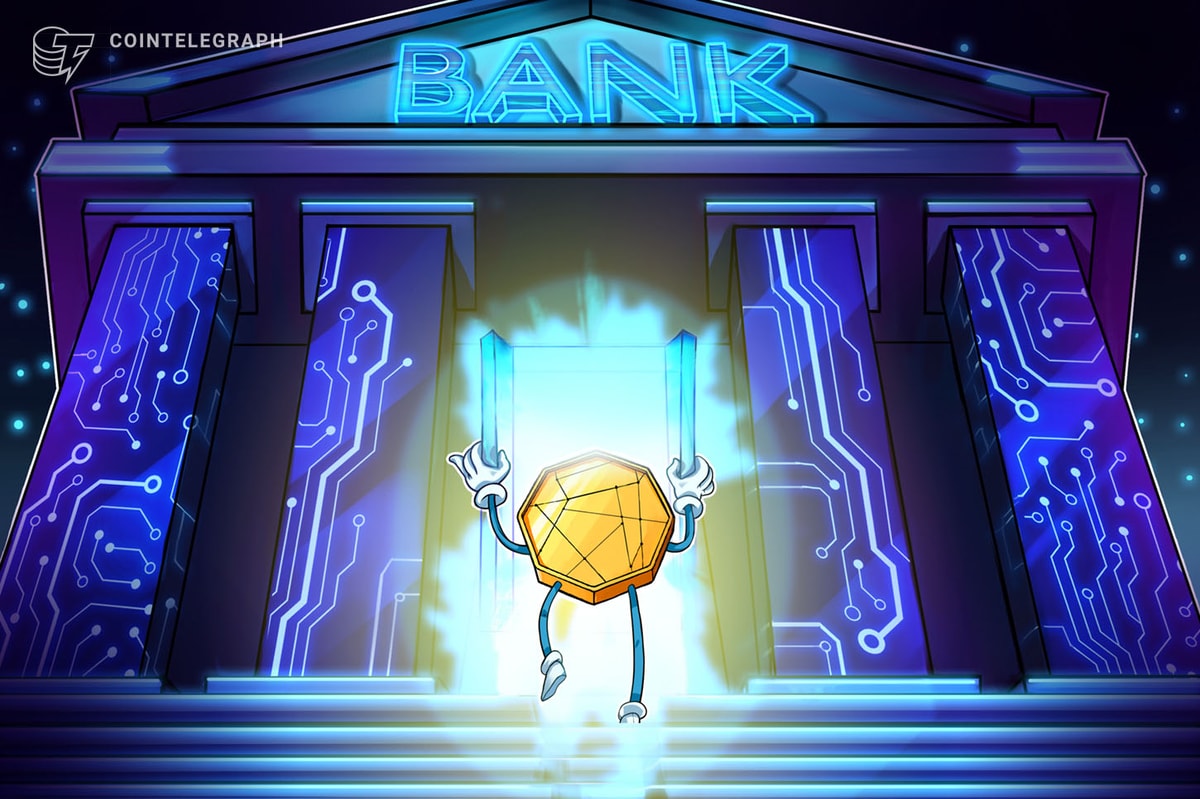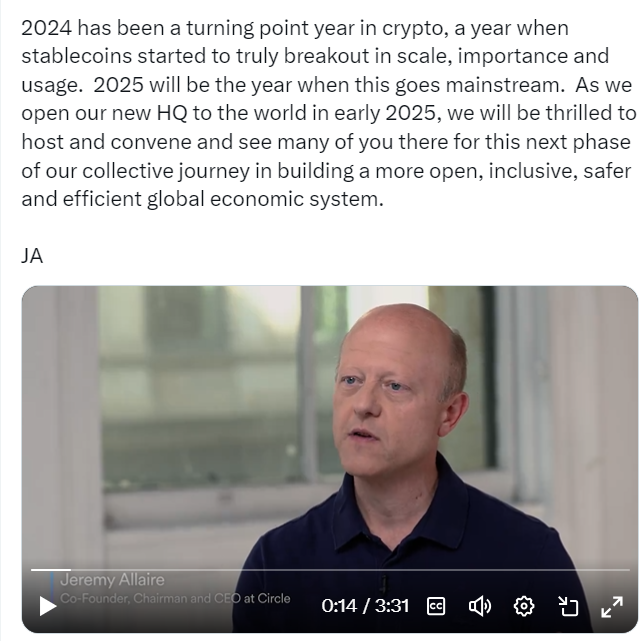
The synthetic stablecoin market is a dynamic part of decentralized finance (DeFi), and Ethena has left a significant mark with its innovative product. With high yields on its synthetic dollar, USDe, Ethena has captured a total value locked (TVL) of $2.7 billion, demonstrating demand for synthetic stablecoins despite the overwhelming dominance of their asset-backed equivalents. However, as with any groundbreaking product, there are risks associated with the strategy Ethena employs, especially relating to its reliance on USDT-margined contracts.
The development of the stablecoin market: Yield beyond stability
Stablecoins are a key tool for moving in and out of the crypto world. Stablecoins backed by traditional financial assets, such as Tether (USDT) and USD Coin (USDC), are currently the most popular, and both rely on the banking system since they hold their collateral in fiat money and its derivatives. The collapse of Silicon Valley Bank (SVB) in early 2023 highlighted the potential risks of stablecoins. During the collapse, USDC temporarily depegged to $0.88, creating panic as a significant portion of the market’s liquidity was tied up in the stablecoin.
The rise of projects such as Ethena, Frax, UXD or Elixir is a direct response to the growing market demand for yield-bearing stablecoins. Ethena currently leads the way among alternative stablecoin projects with a $2.8 billion market capitalization. It thus makes up 1.7% of the total stablecoin market cap. Ethena relies on USDT-margined perpetual contracts to maintain its peg.
It functions as a tokenized equivalent of the cash-and-carry trade. Upon creation, a unit of USDe is backed by $0.5 units of spot holdings (Ether (ETH) or Bitcoin (BTC)) and $0.5 of a short position in the corresponding USDT-margined perpetual. The total value of this position will be $1 regardless of the asset’s price swings.
The yield on Ethena comes from the funding rates associated with perpetual contracts and staking rewards on Ethereum. Funding rates are periodic payments between long and short positions, where the side with more demand pays the other. There tends to be systemic demand for long leverage in the crypto market, contributing to the yield offered by Ethena. As the market has cooled throughout 2024, funding rates have dropped, and the annualized yield on USDe has dropped from as high as 30% to around 4% in the current market environment.
While the reliance on USDT-margined contracts has allowed Ethena to provide yield opportunities, it also introduces risks. Should USDT ever depeg due to issues in the traditional financial system, USDe would not be insulated from the impact of such an event.
NakaUSD: A decentralized vision for synthetic stablecoins
In his well-known “Dust on Crust” essay, Arthur Hayes outlined an alternative vision for synthetic stablecoins that avoids dependence on the traditional financial system. Hayes proposed using BTC-margined contracts to maintain the synthetic stablecoin’s peg to the US dollar. This could create a synthetic stablecoin that would not rely on fiat-backed assets such as USDT and would thus be insulated from the shutdowns, collapses and liquidity restrictions of traditional finance.
Ethena relies on USDT-margined contracts and thus diverges from this vision. This decision was driven by the platform’s focus on offering high yields. This approach has allowed Ethena to achieve impressive TVL and liquidity levels, proving its product-market fit. Yet, as the market evolves, there will be ongoing debates about how best to balance yield, decentralization and risk.
A hypothetical depegging scenario
Ethena would be vulnerable in the case of a USDT depeg. While USDT has maintained its peg for most of its existence, any deviation could have ripple effects on platforms such as Ethena that depend on it.
Let’s explore a hypothetical scenario:
- Position: A $55,000 (roughly the price of 1 BTC) short position on BTC/USDT-margined perpetual contracts from Ethena.
- USDT depegging: USDT falls from $1 to $0.80.
- BTC price: Initially $55,000, and after USDT depegs, Bitcoin appreciates by 25%, rising to 68,750 USDT.
Before depeg:
- A 1 BTC short position ($55,000 notional). The same 1 BTC is held in the long spot.
After depeg:
- With Bitcoin appreciating to 68,750 USDT, the unrealized perpetual profit and loss will equal -$11,000 (or 13,750 when converted to USDT).
- Due to the USDT depegging to $0.80, the real value of USDT collateral would drop by $11,000 (13,750 USDT x $0.80).
- This leads to a shortfall of $11,000 in collateral (20%).
Collateral erosion for users
Ethena’s users, having posted collateral in USDe (which is pegged to USDT), would experience a similar reduction in their holdings. If users originally posted $55,000 in collateral, that value would decrease by 20%, leaving them with only $44,000 to cover the position. This case proves that USDe is 1:1 pegged to USDT.
While a USDT depeg poses a risk for USDe, it’s important to note that this is not the most significant threat. The far greater risk for USDe lies in prolonged periods of negative funding rates. Ethena’s yield is tied to the funding rate environment, and if negative rates persist, it could erode returns and stability.
Exploring alternative synthetic stablecoins
Ethena is not alone in experimenting with derivatives-based synthetic stablecoins. Several other projects have emerged, each offering different approaches to balancing yield and risk:
- UXD is a synthetic stablecoin project that faced significant challenges due to its heavy reliance on Mango Markets, a Solana-based decentralized exchange where it held the majority of open interest. This concentration created pressure on the funding rate on Mango Markets. Additionally, Mango Markets used USDC as the quote and settlement currency.
- DWF Labs intends to introduce a synthetic stablecoin that will support a diverse range of collateral, including stablecoins such as USDT, USDC, Dai (DAI) and USDe, as well as major cryptocurrencies. Each type of collateral offers a different annual percentage yield based on its risk profile, which allows users to choose between stable, lower-yielding assets and riskier, higher-yield options. By over-collateralizing and using multiple asset types, DWF Labs aims to reduce its reliance on any single asset and create a more resilient system during periods of market volatility.
- Elixir: Elixir offers deUSD, a fully collateralized synthetic dollar, as the core asset of its ecosystem. DeUSD is minted using Lido Staked Eth (stETH) and Savings Dai (sDAI) as collateral, which the protocol uses to short ETH and create a delta-neutral position. This mechanism allows Elixir to capture positive funding rates from the basis trade on Ethereum. Even in negative funding rate environments, deUSD is designed to remain resilient due to its overcollateralized structure. DeUSD’s value is supported by a diversified collateral pool and the profits from the funding rate trades.
A doomsday-resistant alternative
Another player in the space is Aegis.im, which has taken a more risk-averse approach by backing its stablecoin USDa with BTC-margined contracts. Aegis is a pre-alpha stage project that focuses on building a doomsday-resistant stablecoin that minimizes the reliance on centralized assets such as USDT, making it more resilient to extreme market conditions or fiat-related crises. Aegis, in essence, is doing exactly what Hayes envisioned in his “Dust on Crust” essay — no ties to the fiat banking system. Aegis’ model ensures that USDa is minted only with existing inflows, which provides transparency and stability.
Conclusion
The synthetic stablecoin market is expanding as crypto holders look for stable assets that also provide yield. Ethena has proven its ability to meet this demand, building substantial TVL and offering a high-yield product that appeals to a broad user base. While its reliance on USDT introduces risks, Ethena’s innovation in the space has positioned it as a key player.
As the market grows, transparency, risk management and minting practices will become essential for sustainable success. Projects such as Ethena and Aegis showcase the diverse approaches being explored, with some platforms focusing on yield and liquidity while others prioritize resilience and decentralization. The future of synthetic stablecoins will likely be shaped by those that can strike the right balance between these competing factors, ensuring long-term stability and growth for their users.



